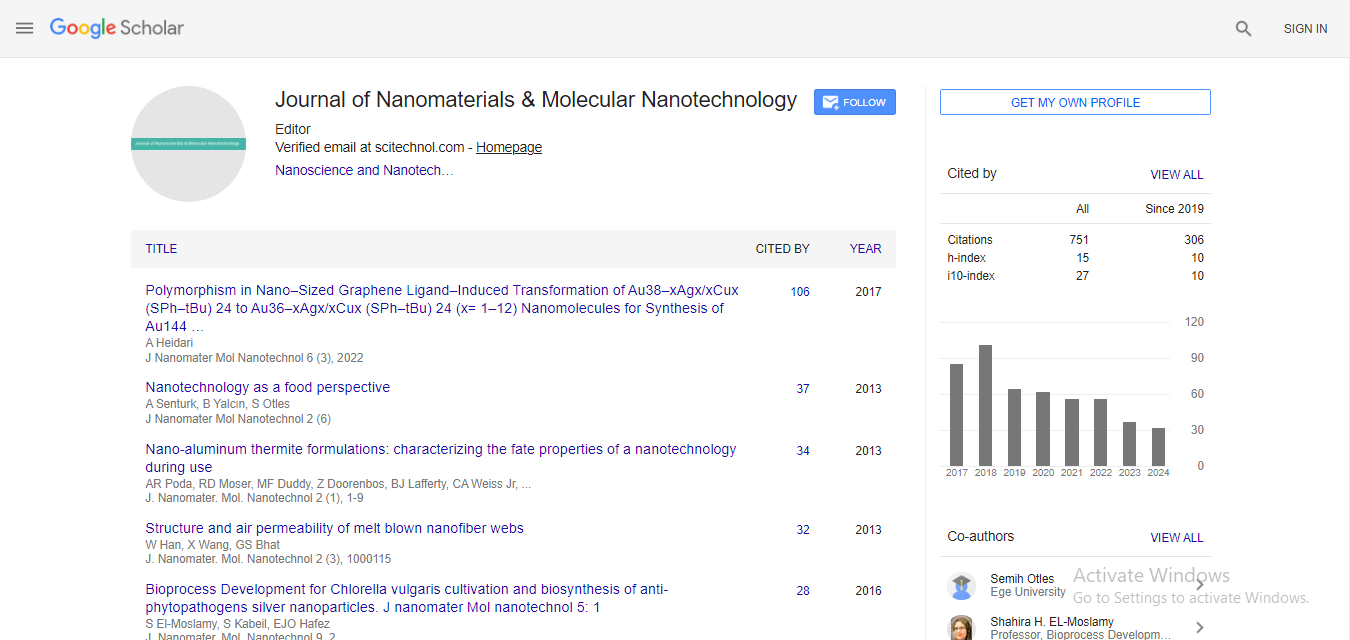Prospects and potential safety implications of nanoformulation of agrochemicals in crops production
Haixin Cui
Chinese Academy of Agricultural Sciences, China
: J Nanomater Mol Nanotechnol
Abstract
Using nanotechnology to formulate nano-delivery systems (or nanoformulations) for pesticides and nutrients by virtue of nanomaterials related properties has shown a great potential for alleviation of these problems. The development of agrochemical nanoformulation aims at precise release of necessary and sufficient amounts of their active ingredients over a period of time, in responding to environmental triggers and biological demands through targeted delivery or controlled release mechanisms. However, these advantages might be offset by some potential risks of human health and ecological disasters, caused by the nanoparticles flowing into the environmental systems and food chains. Nanoparticles in agrochemicals may involve either very small particles of insoluble or fat-dispersible active ingredients and nanocarrier materials. The environmental toxicology studies of these nanoparticles should be conducted in following aspects: 1) the pathway of agricultural nanoparticles flowing into the environment-the pathway and volume of nanoparticles from agrochemicals flowing into environment in the process of leaf spray and soil application; 2) environmental behaviors of agricultural nanoparticles-the process of transportation and transformation of agricultural nanoparticles in environmental system and the food chain, such as dispersion, congregation, absorption, bio-uptake, bioaccumulation, metabolism and degradation; 3) toxicity of agricultural nanoparticles to environment life-toxicity of agricultural nanoparticles to environment life, such as bees, birds, fish, silkworms, earthworms, soil beneficial microorganisms. These toxicity evaluations include acute toxicity, chronic toxicity, cumulative toxicity and joint toxicity, in vivo stability, bioaccumulation and biomagnification, etc.; 4) toxicological effects of agricultural nanoparticles on plants-the adverse effects of agricultural nanoparticles on physiological processes, stress resistance, growth and development state, crop yield and quality; and 5) agricultural product residues and food safety-the distribution and behavior characteristics of agricultural nanoparticles inside of crop plant, such absorption, transport, accumulation, degradation, etc., especially the transportation and accumulation towards the edible organs and metabolism increasing toxic phenomenon.
Biography
Haixin Cui has completed his PhD from Osaka Prefecture University in 1996. He is the Chief Scientist of National 973 Project; Director of Nanotechnology Research Center of Agriculture, Chinese Academy of Agricultural Sciences; Research Fellow and PhD Supervisor of Institute of Environment and Sustainable Development in Agriculture, CAAS; and Academic Leader of Biological Physics, CAAS. He served as Professional Committee Member of China Medicinal Biotechnology Association, Evaluation Expert of the award of National Science and Technology Conference and Evaluation Expert of 863 Program. His main research areas are agricultural chemicals precisely controlled-release technology, nano-biotechnology and the application of nanomaterials in agriculture.
Email: haixin_cui@hotmail.com
 Spanish
Spanish  Chinese
Chinese  Russian
Russian  German
German  French
French  Japanese
Japanese  Portuguese
Portuguese  Hindi
Hindi 



